Growing strawberries can be extremely rewarding. After weeks of watering, nurturing, and keeping them alive, it is incredibly satisfying to finally bite into a delicious strawberry with amazing fruit quality that you have managed to grow yourself.
Unfortunately, growing strawberries in soil traditionally can have a lot of drawbacks.
Pests can get into the fruit, completely destroying your plants. The soil may not have enough nutrients, causing your strawberries to be underdeveloped.
- Related article: Can All Plants Be Grown Hydroponically?
Why not try something that’s a little more modern and requires significantly less work, which is growing plants hydroponically?
Why Grow Hydroponic Strawberries?
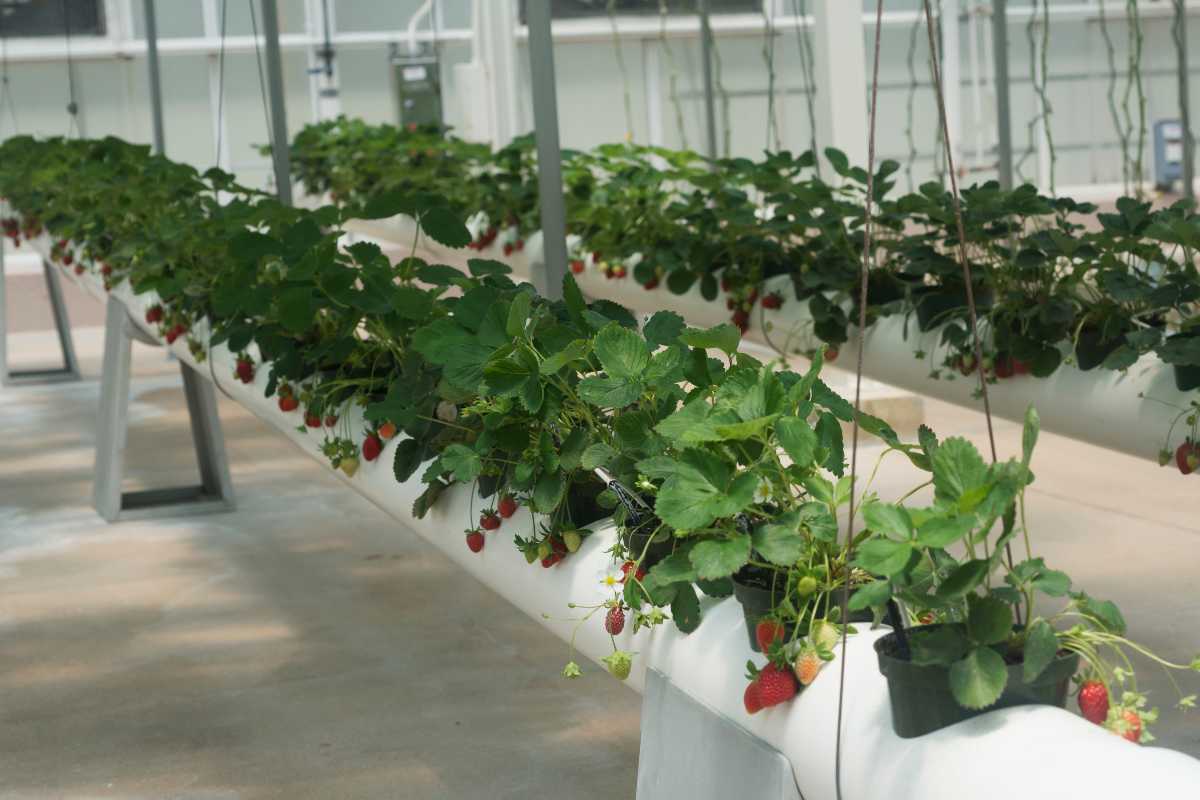
Benefits of Growing Hydroponic Strawberries
- Less worries about harmful pests due to the lack of soil present when growing hydroponic strawberries, there’s no chance of you having to deal with soil-based pests.
- It uses significantly less water because the water is put into a circuit and circulates between the plants.
- Saves space—it can be extremely beneficial, especially if you live in a smaller apartment.
- Hydroponic strawberries can also be stacked vertically, allowing for way more plants per square footage.
Drawbacks of Growing Hydroponic Strawberries
- Expensive – It requires specialized equipment and nutrient solutions, and the initial setup cost of the equipment and supplies needed for a hydroponic system can add up quickly.
- Complicated – There’s a lot of technique that goes into gardening, and even more maintenance, that goes into the entire process of hydroponic gardening.
- Fewer berries – Hydroponic strawberries are grown without soil in nutrient-rich solutions, which can result in a lower yield of berries due to the absence of natural microorganisms that aid in plant growth. Furthermore, the smaller and more condensed hydroponic growing systems allow for less room for the plants to expand, leading to reduced fruit production.
Equipment Needed to Grow Hydroponic
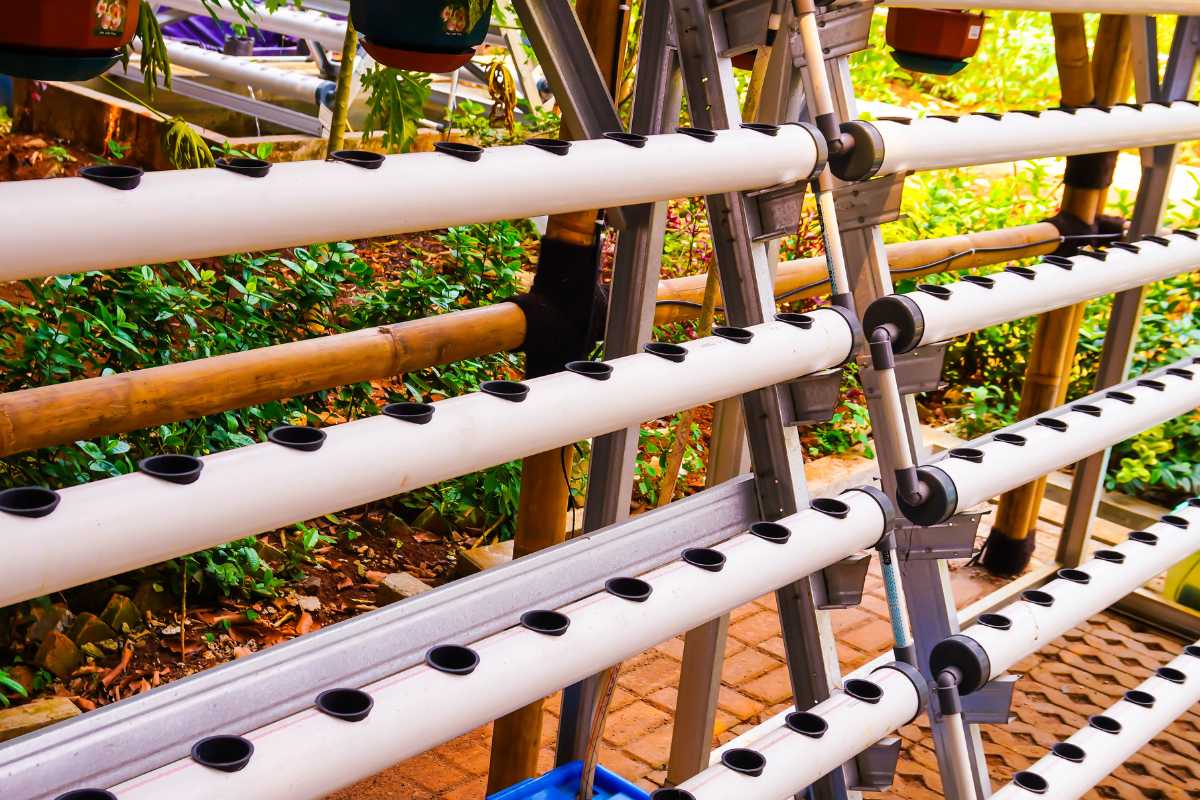
Strawberries
Starting a hydroponic strawberry farm can require significant investment in materials and equipment, leading to high upfront costs.
When choosing a hydroponic system, it is important to consider the available space and intended usage to ensure that it meets your specific requirements.
Building a personal system may be a cost-effective option for those with budget constraints, as it can be tailored to meet specific requirements and can be adjusted to fit the designated space.
These are the necessary items:
- Garden tray – A type of container used in hydroponic planting. It is typically shallow and made from materials such as plastic or wood. The tray holds the nutrient solution and growing medium for the plants.
- Reservoir – A vessel that contains a nutrient solution required for hydroponic plants to access water, oxygen, and crucial nutrients.
- Water pump – Utilized in hydroponic gardening to transfer water from one location to another. Its main function is to circulate the nutrient solution throughout the system, providing it to the plant roots and then returning it to a reservoir.
- Growing medium – Necessary to provide support for the roots of hydroponically grown plants. Some common examples of growing mediums are clay pellets, coconut coir, vermiculite, perlite, and rockwool.
- Nutrient solution – Consists of a blend of water and crucial elements like nitrogen, phosphate, potassium, calcium, and magnesium to provide plants with nourishment.
- Plus a few other miscellaneous hydroponic items.
How to Grow Hydroponic Strawberries
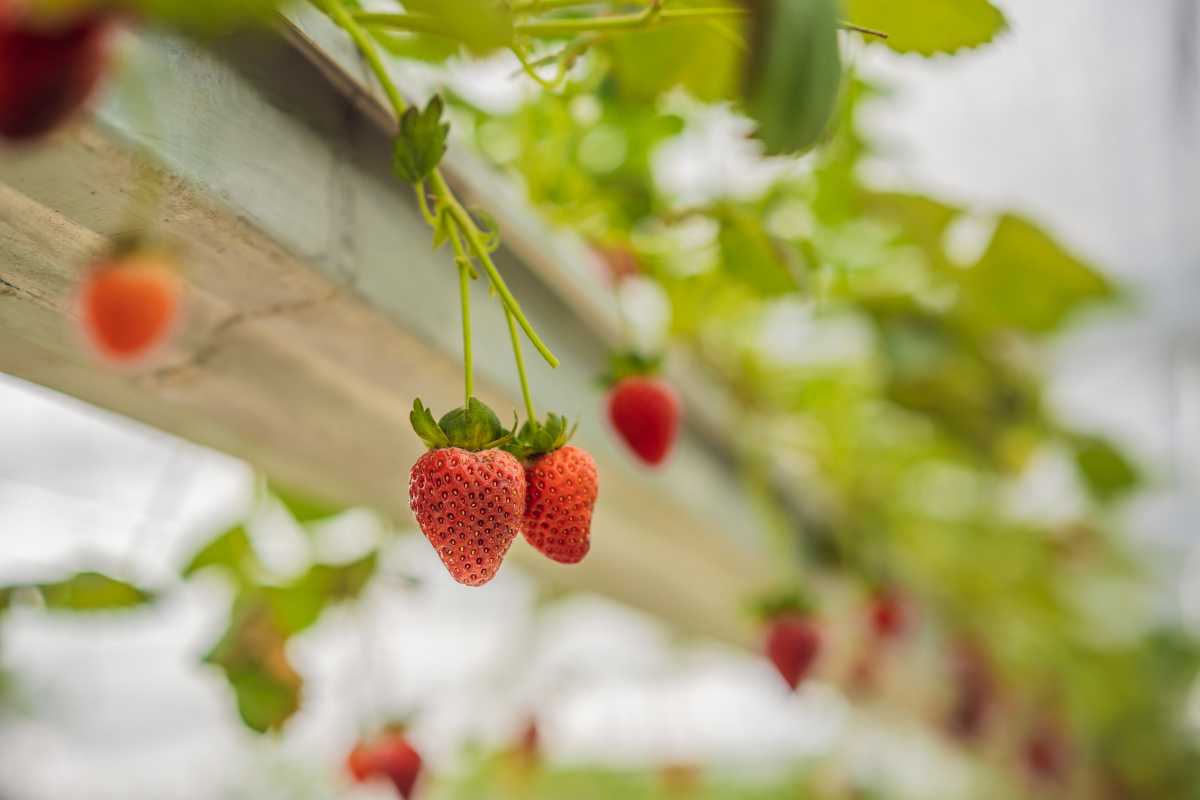
Choose the Strawberry Variety to Grow
There is a wider selection of strawberries than you might expect, so trying to choose one that suits your preference is a very necessary process.
Here is a list of fourteen types of strawberries that I would recommend, all delightfully sweet with varying degrees of difficulty to grow:
- Albion Strawberries – A variety of strawberry plant that is recognized for its disease resistance, high yields, and large, sweet, and juicy strawberries.
- Allstar Strawberries – A type of strawberry that is cultivated hydroponically. They are recognized for their sweet taste and juicy consistency, as well as their capacity to be harvested in large quantities within a brief period.
- Alpine Strawberries – A species of small, wild strawberry plant that possess a sweet taste. The fruits they produce are small and soft, and are recognized for their strong scent.
- Aroma Strawberries – A hydroponically grown variety known for their sweet scent and unique flavor profile attributed to their high sugar content relative to other strawberry types.
- Camino Real Strawberries – A type of strawberry cultivated in both Mexico and California, recognized for their considerable size, sweet flavor, and fragrance.
- Diamante Strawberries – Grown through hydroponics and are recognized for their large size, distinct color, and sweetness.
- Earligrow Strawberries – Earligrow strawberries are a type of strawberry variety that is known for its early-fruiting capabilities. This particular variety of strawberries has been selectively bred for an earlier fruiting time without compromising its taste.
- Fragaria virginiana Strawberries – A type of perennial flowering plant that originates from North America and is also commonly referred to as Wild Strawberries. They have white flowers and small red fruits with a sweet flavor.
- Garden Strawberries – Garden strawberries are a type of fruit that is produced by the Fragaria genus of plants. They have an oblong shape, a bright red color, and a sweet flavor.
- Hood Strawberries – A type of strawberry that is recognized for their sweet and juicy taste. They are commonly medium-sized and have a heart-shaped form with a slightly pointed tip. The berries have a bright red color and a glossy surface.
- Rosa Linda Strawberries – A kind of heirloom strawberry known for their distinct sweet taste and bright red hue. They are favored by both home gardeners and commercial growers due to their productivity and resistance to disease.
- Seascape Strawberries – A variety of everbearing strawberries that yield a plentiful harvest of sizable, succulent, and sweet berries throughout the duration of the growth period. They possess superb resistance to illnesses and are ideal for hydroponic farming.
- Sweet Charlie Strawberries – A type of strawberry that is recognized for its sweet taste and juicy texture. It is a high-yielding variety that produces large berries with an intense aroma. Sweet Charlie Strawberries have excellent disease resistance and can be grown both in the ground or hydroponically.
- Ventana Strawberries – Ventana strawberries are a type of hydroponically grown strawberry that is known for its sweet and juicy flavor. Ventana strawberries are typically larger than traditional varieties, with an intense and flavorful aroma.
Choose the Hydroponic Technique

There are six types of hydroponic methods, such as Deep Water Culture System (DWC), Nutrient Film Technique (NFT), and Kratky, and trying to decide on the best one for your plants can be a very research-heavy process.
To save you from all the researching trouble, here are two systems that are best for strawberries of any variety:
The Ebb and Flow System
Plants are not constantly submerged in water. Instead, there are set times when the system is “flooded” and the plants receive all their nutrients.
Once time has lapsed, flooding stops, and water is drained out of the system, exposing the plant’s roots to air and allowing them to oxygenate between floods.
The time between and during floods is determined by the specifications of the strawberry you decide to grow.
There are many advantages to the Ebb and Flow system, but the most notable is that they are easily adjustable to whatever specifications you require, space- or plant-wise.
A disadvantage of this system is that, if the pump isn’t working properly or there is a failure in the system, your plants can die, either from lack of nutrients or too much water.
If the system is not draining properly, it can lead to your plants rotting.
The Hydroponic Drip Irrigation System
Water is slowly dripped to individual plants onto their growth medium through a system set above them.
Irrigation systems can be categorized into two types: recovery and non-recovery. They maintain ideal growth conditions for plants by ensuring proper nutrition and moisture.
Recovery is more popular among non-commercial growers. Water returns to the reservoir once drained from the system and is recirculated back into the plants.
You need to keep an eye on potential pH changes that could take your plants out.
Commercial growers are more likely to use the non-recovery system, which instead lets water drain out of the growth medium and into waste.
The systems have elaborate timer systems that keep the growth medium constantly dampened. The precise amount of water is delivered to each plant for optimum growth and minimum water wastage.
One benefit of utilizing the Drip System is the potential for expansion and the capacity to cultivate multiple types of vegetation.
An effective method to expand the area of your garden involves utilizing adjustable pipes and systems.
The system necessitates regular maintenance and can be intricate at times.
These plants require a significant amount of time and attention from the grower to ensure that they are healthy and nothing goes wrong.
Light and Temperature Conditions
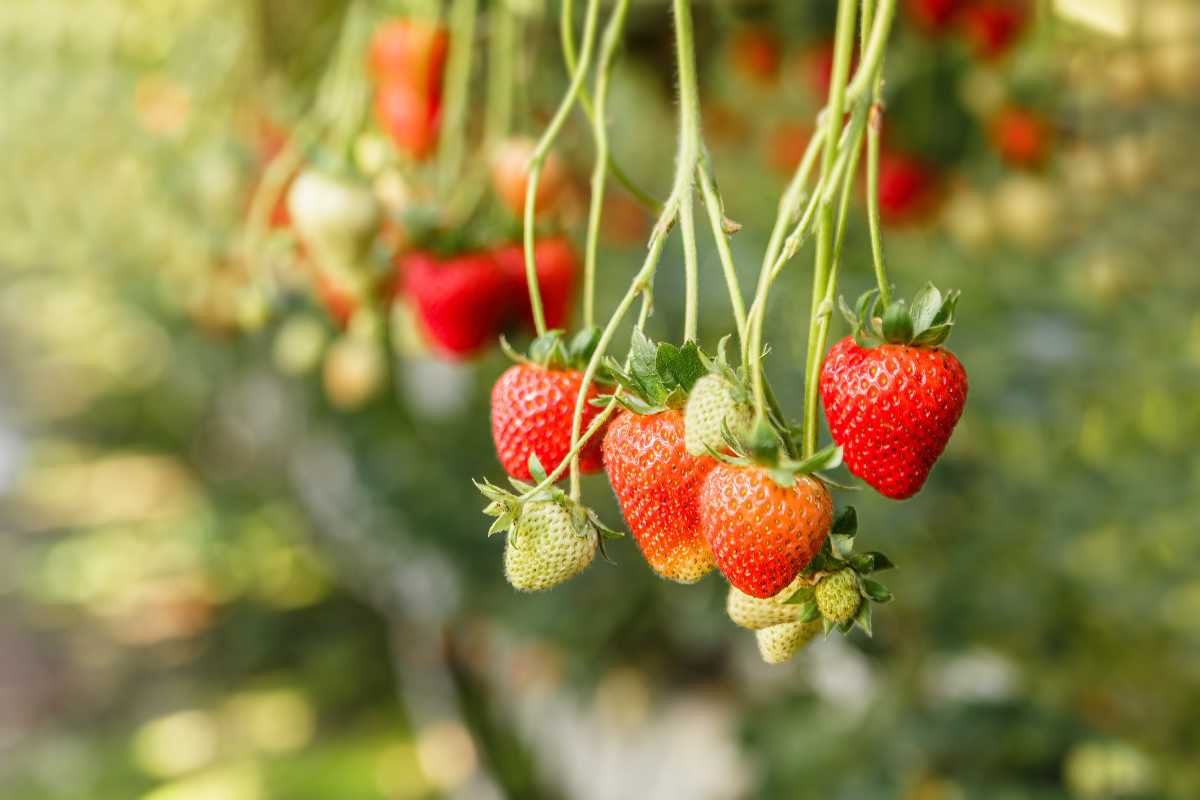
The necessary light and temperature conditions depend on the type of strawberry you choose to grow.
Most strawberries require a minimum of 14-16 hours of light every day. The only strawberry that requires less artificial light, and may actually struggle if exposed to more, is the Alpine Strawberry.
The ideal temperature at which strawberries grow fluctuates across the board, and are listed below:
- Fragaria virginiana and Garden share a temperature range of 60-80°F (15-27°C).
- Camino Real has a 10-degree difference with its maximum temperature at 90°F (32°C).
- Hood also has a 10-degree difference, with its minimum temperature at 70°F (21°C).
- Albion and Aroma have a temperature range of 35-85°F (0-29°C).
- Allstar has a base temperature of 60°F (15°C).
- Diamante has the coldest temperature range 28-45°F (-2-7°C)
- Earliglow has a temperature range of 54-80°F (21-27°C).
- Rosa Linda’s temperature range sits at 60-75°F (14-24°C).
- Seascape has the hottest temperature range with 80-90°F (27-32°C).
- Sweet Charlie has a temperature range of 50-79°F (10-26°C).
- Ventana has a temperature range of 70-80°F (21-27°C).
Water and pH levels
Strawberries are a plant that typically prefers more water that is slightly more acidic, ranging between 5.5-6 pH level.
Hydroponic strawberries grow best in warmer water temperatures. The ideal water temperature for growing strawberries should be between 65-80°F.
Growing Medium
Your growth medium has one purpose: to hold the roots of your plant and anchor it in the system, keeping it upright.
Your growth medium doesn’t matter too much as they all pretty much do the same thing so it would really come down to your personal preference, as long as it can hold the strawberry plant and has organic nutrients.
However, if you want optimal growth for your strawberry plants, the best you can choose from is:
- Growstones – Growstones are a type of hydroponic growing medium made from recycled glass. They provide optimal aeration and drainage for plants, while also helping to improve root development. Growstones have an ideal pH balance and are incredibly lightweight, making them easy to use and transport.
- Clay pebbles – Clay pebbles growing medium is an inert, pH-neutral substrate made of clay pellets that can be used to grow plants using hydroponic systems. Clay pebbles offer beneficial aeration and drainage, as well as providing support for plant roots. Reusable, lightweight, and easy to maintain qualities make them an ideal choice for hydroponic growers.
- Coco coir (which does not alter the nutrition or pH levels) – A type of growing medium made from the husks of coconuts. It is an organic, renewable resource that is becoming increasingly popular with hydroponic gardeners. Coco coir provides excellent aeration and drainage, which helps promote healthy root growth, while also providing additional nutrients to the plant. It is also lightweight, making it easy to transport and store.
Nutrient Solution
To achieve optimal fruiting in strawberry plants, it is necessary to provide sufficient hydroponic nutrients solution through careful consideration and experimentation.
Unlock the secret to healthy plant growth by providing the perfect balance of the key nutrients—potassium, nitrogen, and phosphorus—and secondary nutrients—magnesium, sulfur, and calcium.
The solution also requires critical nutrients such as copper, zinc, chlorine, manganese, cobalt, and molybdenum to provide its advantages.
Pollination
Strawberries are nature’s little matchmakers, with the ability to pollinate themselves, but sometimes they need a little help from their bees or even a gust of wind or a sprinkle of rain to pollinate.
Given that hydroponic systems are typically established indoors, none of these alternatives appear viable. As a result, what is the most effective method for pollinating your strawberries and ensuring their optimal growth?
The solution is actually very effective and simple: hand pollination!
Using a cotton swab (or another item that’s just as small and soft to easily reach the plant without breaking it), collect the pollen.
Then move to a second plant and transfer the collected pollen, repeating the process with each plant until all of them have been pollinated, reusing the same cotton bud.
Pruning the Plants
Pruning is a necessary process to optimize plant growth and fruit production. It’s done by removing dead or unnecessary portions of the plant that are consuming nutrients that could be used elsewhere in the plant.
The most necessary cutoffs are the removal of old leaves, any foliage 4 inches (10cm) above the crown of plants that bear fruit in the summer, and runners.
These cutoffs not only encourage new growth but also keep nutrients moving to where the plant needs them most, rather than wasting them on unnecessary additions.
Propagating the Plants
Propagating can be done through two methods, seeds and plantlets.
Starting from seeds can be a slightly more difficult start, but it allows for more variation.
After obtaining seeds from a dependable source, they can be potted indoors to ensure controlled environmental conditions for optimal germination and growth into young plants.
Proper maturation of young plants requires adequate moisture and warmth.
Starting from plantlets is slightly easier and significantly cheaper because you are starting with cutoffs from your already existing plants.
Place and anchor the base of the plantlets in the soil and make sure to keep them moist and warm while also providing light so that they will grow and mature at optimum levels.
Plantlet roots will develop more quicker than seed roots. Wait until the roots are at least two inches long before unpotting them carefully.
Make sure you rinse the soil out of their roots so nothing can affect the system before planting them in your growing medium.
Harvest the Strawberries

Strawberries are ready to be harvested 4-6 weeks after they have bloomed. Make sure to only pick the ripe fruit and that you harvest every 3 days.
Never pull the fruit off the plant as it could cause some serious damage. Instead, cut it off at the stem.
If your plants bear fruit in the summer, the harvest will last three weeks, providing you with an abundance of fruit.
Troubleshooting Hydroponically Growing Strawberries
Common Growth Problems
Growth problems are most commonly a result of an imbalance, either with the nutrition or pH levels of the plant.
It is your responsibility to make sure that you properly document how the plant is being looked after:
- What nutrients they are giving the plant.
- How much of it is being given to the plant.
- How frequently it is given to the plant and any changes that have been made along the journey.
It is important to keep track of changes made to plants in case there are negative effects, allowing for identification and correction of the source.
Proper dosing and timing of the nutrient solution is crucial for plant growth. Deviations from the feeding schedule can disrupt the plants’ pH levels.
Common Pests
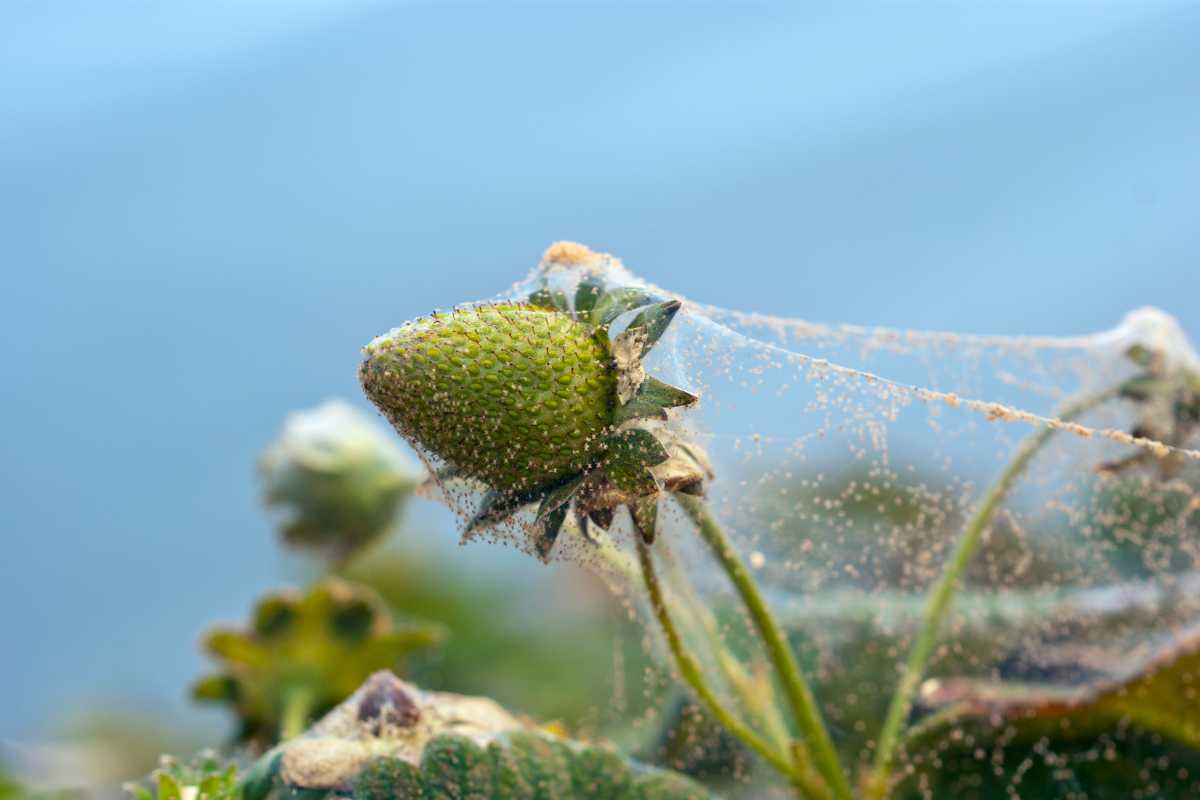
Having your system indoors can greatly help decrease the chance of pest or soil-based insects affecting your plant, but there is always a chance for your garden to be infiltrated by an outside source.
Some airborne pests that may be encountered, even indoors, may include:
- Mites (Spider Mites) – Spider Mites are small arachnids that form colonies on plants and feed on them by sucking the juice out of the leaves.
- Thrips – Thrips are tiny insects with fringed wings that feed on plant juices.
- Gnats – Gnats are small flies that feed on decaying matter and lay eggs in moist soil or other organic material near plants.
Most issues can be easily dealt with by spraying your plants with Neem Oil or an organic pyrethrin-based spray if the problem persists.
Common Diseases
Hydroponically growing plants eliminate most Root Rot problems due to the lack of soil, which is where the fungal rot likes to form.
Unfortunately, some diseases can still develop in the growing medium, however, they can be easily dealt with.
Fruit Rot is a big concern and can happen quite commonly, especially on ripe or overripe fruit. Two forms are Rhizopus Rot and Mucor Fruit Rot, which both develop in warm temperatures that are ideal for the plant to grow in.
These can be avoided if the fruit is picked as soon as it ripens.
Botrytis Cinerea (also known as grey mold) is a fungal mold that can infiltrate indoor garden areas quite easily. Neem Oil or insecticidal soap is used for light infection and copper-based fungicide for largely infected areas.
Final Thoughts on Growing Strawberries Hydroponically
Revolutionize your farming game with hydroponic strawberry farming—the sustainable and efficient alternative to outdated soil-based methods.
Hydroponics enables hydroponic strawberry growers to cultivate fresh and high-quality strawberry fruits throughout the year, irrespective of climate or location, by providing a controlled environment for the plants to grow.
Experience the magic of hydroponic strawberry plants—no soil-borne pests or diseases mean less need for harmful chemicals and more delicious, juicy berries for you to enjoy!
Hydroponic strawberries provide both a tasty and healthy product, and also have the potential for use in sustainable agricultural practices!
Want to learn more about hydroponic strawberries? Check out these other great reads:


How do i get in touch with Henry ?
You can send me an email to hello@smartgardenhome.com or through the contact form!